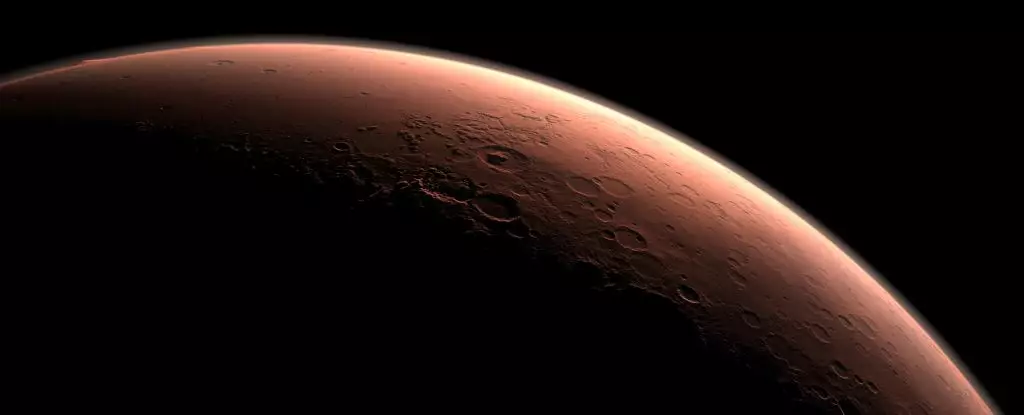The enigma of life on Mars has captivated humanity since we turned our gaze to the cosmos. The pioneering Viking missions of the 1970s marked a significant milestone in our Martian exploration, yet despite their groundbreaking achievements, we have yet to find definitive evidence of life. Recent reflections by astrobiologists prompt a critical reevaluation of what was learned during these missions and how future explorations should be tailored to uncover the secrets buried beneath the Martian surface.
Launched in 1975, the Viking landers were the first successful American missions to not only reach Mars but also to conduct a comprehensive analysis of its soil and atmosphere. Among their suite of experiments, biological tests were included to search for biosignatures, indicators that could confirm the presence of life. At the time, these tests were hailed as monumental endeavors in astrobiology. However, as time progressed, it became evident that these experiments may not have been conducted with the foresight necessary to preserve potential evidence of life.
Dirk Schulze-Makuch, an astrobiologist from Technical University Berlin, recently posited that the very methodologies employed during the Viking missions could have inadvertently obliterated evidence of life. With a critical analysis of past approaches, he calls for a fresh perspective on our explorations, suggesting that a misguided understanding of the Martian environment may have led to incorrect conclusions.
The Viking landers were equipped with a gas chromatograph-mass spectromete (GCMS) designed to analyze soil samples. A significant finding from one of these experiments was the detection of chlorinated organics. Initially interpreted as evidence of contamination, modern interpretations recognize that these compounds may have originated on Mars itself. Nevertheless, whether these organics stem from biological or geological processes remains an open question.
Schulze-Makuch highlights a pertinent point: the heating necessary for the GCMS process could have destroyed organic compounds before they could be measured. This raises a compelling question about the instruments’ design and our understanding of Martian life. If life on Mars exists in forms distinct from terrestrial organisms, methods that we assume are effective could be fundamentally flawed.
Further complicating the Viking legacy are the labeled release and pyrolytic release experiments, which were intended to test Martian soil for signs of metabolic activity. The results showed intriguing signals that, in hindsight, could have suggested life. However, such conclusions were dismissed due to null results from other tests, leaving a cloud of uncertainty surrounding their validity.
As our scientific understanding evolves, so too must our approaches to searching for Martian life. Schulze-Makuch emphasizes that the anticipated environment for Martian life was falsely modeled after Earth. Indeed, life has adapted to survive in extremes, including arid conditions, leading to the possibility of life forms that thrive in environments vastly different from our own.
A pivotal aspect of Schulze-Makuch’s argument is the notion of hyperhydration. He draws an analogy to illustrate the potential consequences of introducing water to microbe-adapted environments. Just as well-intentioned intervention in a desert could turn life-giving efforts into a struggle for survival, so too could similar actions on Mars overwhelm any extremophiles that might inhabit the Martian soil.
Moreover, the existence of strong life indicators from dry control runs during Viking’s experiments raises tantalizing prospects. Was it possible that life existed in those samples, only to be extinguished by our methods?
Given the rich questions posed by past investigations, Schulze-Makuch advocates for renewed missions to Mars that focus specifically on the quest for life. He suggests that design considerations must take into account the unique ecological contexts of Mars, rather than applying Earth-centric assumptions that have historically governed our scientific inquiries.
The prospect of dry-adapted microbial life forms incorporating substances like hydrogen peroxide presents a stimulating hypothesis for future exploration. While the Viking missions provided valuable data, the understanding derived from their outcomes must inform the design and execution of future missions. Rather than merely repeating past experiments, we must adopt a more careful and informed approach to searching for life.
The search for life on Mars has certainly evolved since the Viking missions, but the journey ahead remains framed by the critical lessons of the past. Emphasizing a more nuanced understanding of Martian environments and life forms will hopefully lead to discoveries that will illuminate not just the history of Mars, but also the broader narrative of life beyond Earth.


Leave a Reply